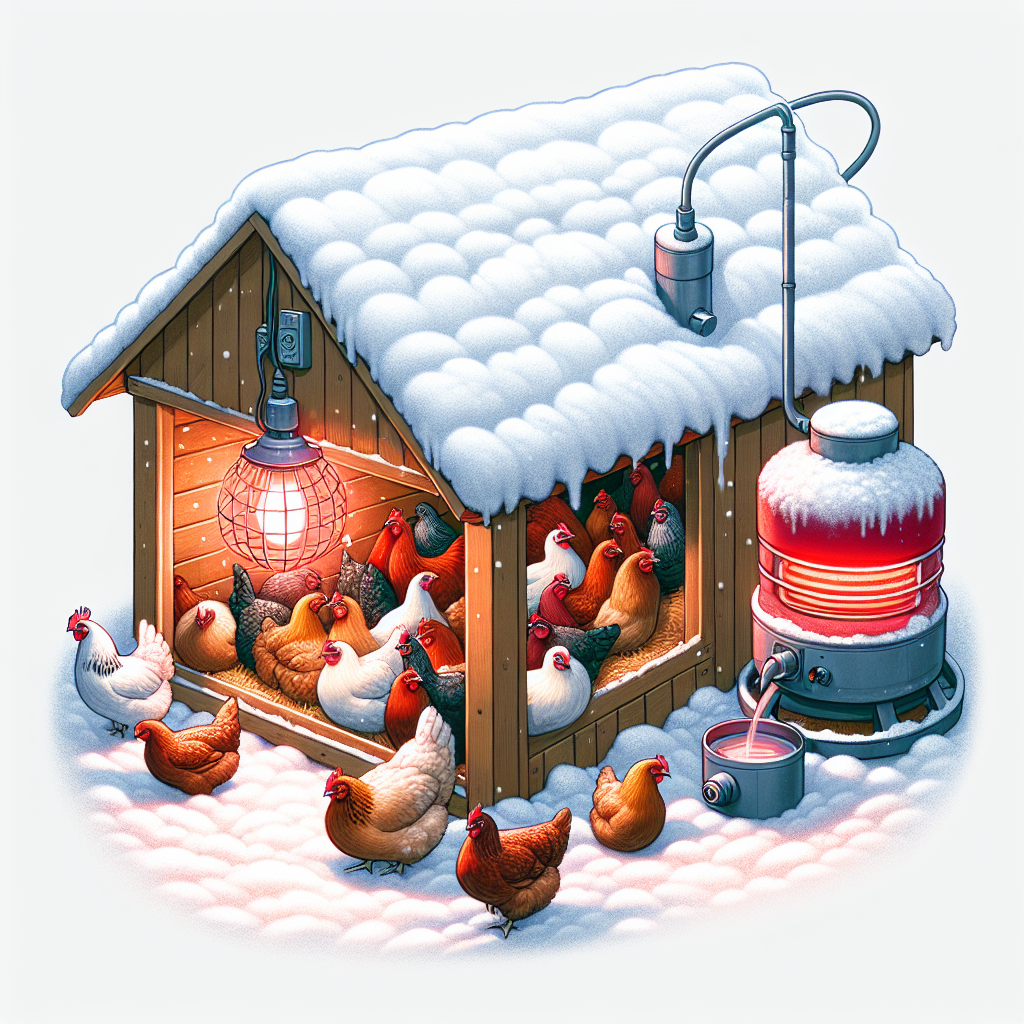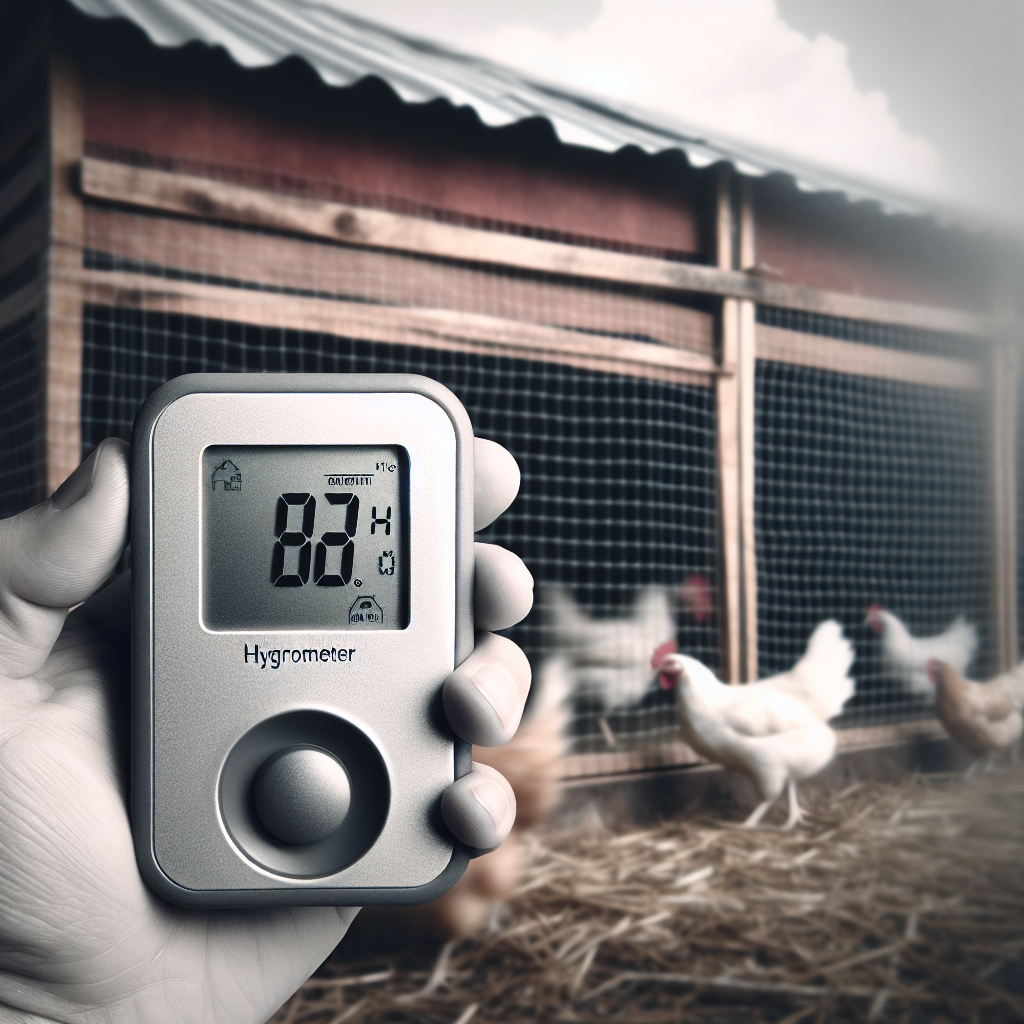In colder conditions, it’s crucial to ensure the health and well-being of your beloved chickens. So, how often should you check and clean the coop? Making sure that the coop is kept clean and free of any potential hazards is essential during colder temperatures. Regularly inspecting the coop for cleanliness and making necessary clean-ups can prevent the buildup of moisture and encourage a healthier environment for your feathered friends. By doing so, you can help keep the chickens happy and healthy all winter long.
General Guidelines for Cleaning
Assessing the Frequency of Cleaning
When it comes to cleaning the chicken coop during colder conditions, it’s important to assess the frequency based on various factors. One of the key factors to consider is the number of chickens in the coop. A larger flock will naturally produce more waste and require more frequent cleaning. Additionally, the coop size and ventilation system will also play a role in determining how often you should clean.
Importance of Regular Cleaning
Regular cleaning of the chicken coop is crucial, especially during colder conditions. It helps maintain a healthy and sanitary environment for your chickens, minimizing the risk of disease. Cleanliness also contributes to better egg production and overall well-being of your flock. A clean coop also reduces unpleasant odors and pests that can be attracted to the accumulated debris.
Factors to Consider
There are several factors you should take into consideration when determining the cleaning frequency of your chicken coop in colder conditions. These include the number of chickens, coop size, ventilation, and litter management. By considering these factors, you can establish a cleaning routine that promotes a clean and comfortable environment for your chickens.
Potential Health Risks
Neglecting the cleaning of your chicken coop during colder conditions can pose health risks to your flock. Ammonia levels can build up in unclean coops, causing respiratory issues and eye irritation for your chickens. Additionally, the accumulation of feces and debris can attract flies and other pests, which can spread diseases. Regular cleaning helps mitigate these risks and ensures the well-being of your chickens.
Cleaning Tools and Supplies
To effectively clean your chicken coop during colder conditions, you’ll need certain tools and supplies. These may include a rake or shovel for removing bedding material, a broom or brush for sweeping, a disinfectant solution for sanitizing, and gloves to protect your hands. Make sure to have these items readily available to streamline the cleaning process and maintain good hygiene practices.
Cleaning Frequency During Colder Conditions
Increased Moisture and Ammonia Levels
During colder conditions, moisture levels can increase inside the chicken coop. This is due to the chickens’ respiration and the moisture content in their droppings. The combination of moisture and ammonia can create an unfavorable environment for your flock if not properly managed. Therefore, it is essential to increase the cleaning frequency to prevent the buildup of excessive moisture and ammonia levels.
Monitoring Coop Conditions
Regularly monitoring the condition of your coop during colder conditions is vital. Keep an eye out for any signs of excessive moisture, mold growth, or foul odors. These indicators can help you assess if more frequent cleanings are needed. By being proactive in monitoring coop conditions, you can address any issues promptly and ensure the well-being of your chickens.
Frequency of Coop Inspection
In addition to regular cleanings, it is recommended to inspect the coop at least once a week during colder conditions. This allows you to identify any potential issues such as drafts, damaged insulation, or water leaks. Regular inspections help maintain a safe and comfortable environment for your flock, reducing the risk of cold stress and other health concerns.
Cleaning Procedure in Colder Conditions
Preventing Frostbite and Cold Stress
When cleaning the coop during colder conditions, it’s crucial to consider the well-being of your chickens. Take measures to prevent frostbite and cold stress by providing adequate insulation and bedding. Pay attention to areas where chickens may be more susceptible to cold, such as perches and nesting boxes. Ensuring a warm and dry environment will contribute to their overall health and comfort.
Coop Ventilation
Maintaining proper ventilation in the coop is essential, even during colder conditions. Adequate airflow helps remove excess moisture and ammonia, preventing the buildup of harmful gases. However, be cautious not to create drafts that could cause cold stress. Consider using adjustable vents or windows to regulate airflow while still providing sufficient warmth for the chickens.
Cleaning Schedule
Establishing a cleaning schedule can help ensure that your coop remains clean and healthy throughout the colder conditions. Depending on your particular circumstances, you may need to clean the coop every few weeks or even monthly. However, it’s important to remain flexible and adjust the schedule as needed based on the condition of the coop and the health of your flock.
Removing Bedding Material
When cleaning the coop in colder conditions, it’s crucial to remove the soiled bedding material. This helps prevent the buildup of moisture and ammonia, maintaining a hygienic environment for your chickens. Use a rake or shovel to scoop out the bedding, and dispose of it properly. Replace the bedding with clean and dry material, such as straw or wood shavings.
Disinfecting the Coop
In addition to removing bedding material, it’s important to disinfect the coop during colder conditions. This helps kill any potential pathogens and parasites that may have accumulated. Use a disinfectant solution specifically designed for poultry coops, following the instructions on the label. Pay special attention to areas that may have been heavily soiled, such as nest boxes and roosting perches.
Special Considerations for Winter Cleaning
Preventing Frozen Water Sources
One of the challenges during colder conditions is preventing water sources from freezing. Chickens require access to fresh water, so it’s important to take precautions to keep their water from turning into ice. Consider using heated waterers or having multiple water sources that can be rotated throughout the day. Insulating water containers can also help prevent freezing.
Addressing Icy Pathways
In colder conditions, icy pathways around the coop can pose a risk of injury for both you and your chickens. Take steps to address icy areas by using rock salt or other ice-melting products. Placing non-slip mats or straw on walkways can also provide traction and prevent accidents. Regularly monitor the pathways and promptly address any ice buildup.
Protecting Chickens from Drafts
While maintaining proper ventilation is crucial, it’s equally important to protect your chickens from drafts during colder conditions. Drafts can cause cold stress and increase the risk of respiratory issues. Ensure that the coop is well-insulated and that there are no gaps or cracks where cold air can seep in. Providing windbreaks, such as bales of hay or tarps, can also help prevent drafts.
Supplemental Lighting
During the shorter days of winter, providing supplemental lighting in the coop can help maintain egg production. Chickens require a certain amount of light each day to stimulate egg-laying. Consider using a timer to provide additional hours of light in the morning or evening. However, be mindful not to overextend the lighting as it can disrupt their natural circadian rhythm.
Winterizing Coop Features
Winterizing certain coop features can help provide additional protection against the colder conditions. Insulate walls and ceilings to retain heat, and seal any gaps or cracks that could allow cold air to enter. Consider using thermal curtains or blankets to cover windows during the nighttime. Providing heating devices, such as heat lamps or radiant heaters, can also help maintain a comfortable temperature inside the coop.
Additional Tips for Managing Colder Conditions
Maintaining Optimal Bedding Depth
In colder conditions, it’s important to maintain an optimal bedding depth in the coop. The bedding serves as insulation and helps regulate moisture. Keep the bedding at a thickness of approximately 2 to 3 inches, ensuring it remains dry and comfortable for your chickens. Regularly monitor and replenish the bedding as needed.
Providing Adequate Feed and Water
Chickens require a balanced diet year-round, including during colder conditions. Make sure to provide them with high-quality feed that is suitable for their age and breed. Consider supplementing their diet with additional protein-rich treats to help keep them warm. Alongside food, ensure a constant supply of fresh, unfrozen water is available for your flock.
Managing Ventilation and Condensation
Proper ventilation is crucial to maintain air quality, even during colder conditions. However, it’s important to manage ventilation in a way that prevents excessive condensation. Excess moisture can lead to dampness and the growth of mold. Regularly inspect the coop for condensation buildup and adjust ventilation accordingly to maintain a healthy and dry environment.
Monitoring Chicken Health
During colder conditions, it’s essential to closely monitor the health of your chickens. Check for any signs of illness, such as lethargy, coughing, or abnormal droppings. Promptly address any health concerns by seeking veterinary advice. By monitoring their health regularly, you can catch any issues early on and take appropriate measures to keep your flock healthy.
Seeking Veterinary Advice
If you’re unsure about managing your chicken coop during colder conditions, don’t hesitate to seek professional advice. Consult with a veterinarian who specializes in poultry health to address any specific concerns or questions you may have. They can provide valuable guidance on cleaning routines, nutrition, and overall flock management to ensure the well-being of your chickens.
In conclusion, maintaining a clean and healthy chicken coop during colder conditions is essential for the well-being of your flock. By following the general guidelines and considering the specific winter cleaning procedures and special considerations, you can create a comfortable and safe environment for your chickens. Regular inspections, adequate ventilation, and proper bedding management, along with additional tips and professional advice, will contribute to a thriving and happy flock throughout the colder months.




